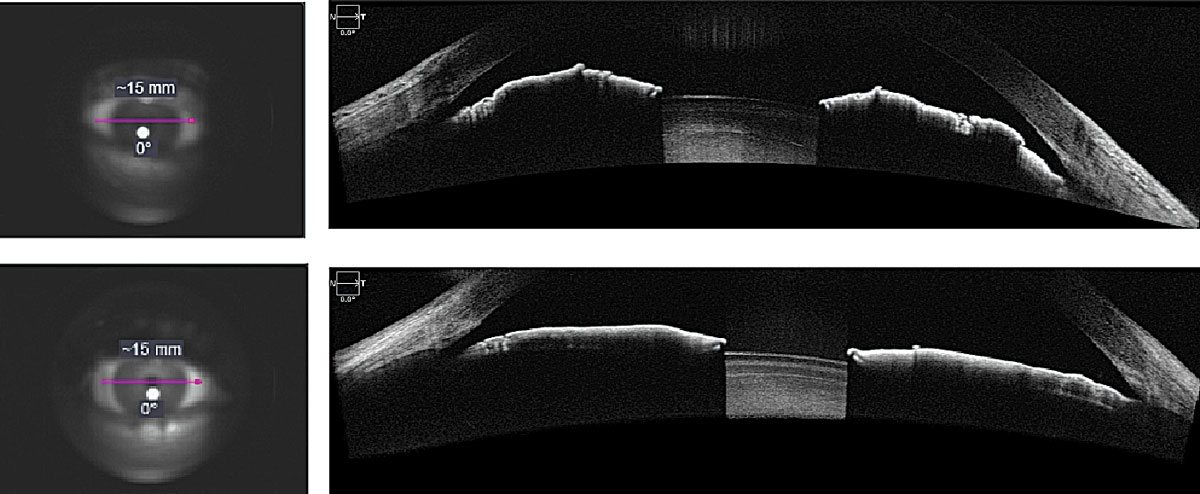 |
|
Compared to patients with PACD and short or medium axial length, those long AL had larger central anterior chamber depth, angle opening distance, anterior chamber width, anterior chamber area and volume, as well as smaller lens thickness and lens vault. Photo: Sharon Keh, OD. Click image to enlarge. |
Patients with primary angle-closure disease (PACD) typically present with short axial length (AL) and hyperopia, but more recently studies have suggested that PACD with a long AL is increasing in prevalence, especially in East Asia. To better grasp the pathogenesis of angle closure in this type of atypical disease, researchers conducted a large observational cross-sectional study that compared dynamic iris changes in patients with long AL to those with short and medium AL.
Participant data (n=448) was extracted from the Handan Eye Study follow-up, which previously found that PACD eyes with long AL tended to have a larger anterior chamber depth and smaller lens thickness than those with short or medium AL. All participants were Chinese, aged 35 or older and had a diagnosis of PACD. The follow-up examination consisted of anterior-segment OCT imaging under light and dark conditions. AL was categorized as short (<22.0mm), medium (≥22.0mm to ≤23.5mm) or long (>23.5mm). Anterior segment parameters, including iris dynamic changes, were compared between the three groups.
Among all study eyes, 10.9% had a long AL with a flatter cornea. Compared to those with short or medium AL, these atypical PACD eyes also had larger central anterior chamber depth, angle opening distance, anterior chamber width and anterior chamber area and volume, as well as smaller lens thickness and lens vault.
“These differences in the anterior segment could result from the horizontal and disproportionate elongation between the anterior and posterior portions in PACD with a long AL,” the authors explained in their paper for the journal Eye. “Thicker iris and smaller lens vault have also been proven to be independent ocular parameters affecting the development of angle closure in eyes with PACD and long AL,” they added.
Meanwhile, none of the measured iris parameters were significantly different between the three AL groups, including iris thickness, iris cross-sectional area, iris curvature or pupil diameter change between light and dark. The study authors suggest that this could mean “the proportion of pupillary to non-pupillary block angle closure mechanisms might not result in a significant difference among eyes with PACD that have different AL levels.” Moreover, these findings relay that “dynamic iris changes might also contribute to angle closure in eyes with PACD and long AL, considering that iris cross-sectional area change is constant among different AL levels.”
This study presents new evidence suggesting that dynamic iris parameters may contribute to the pathogenesis of angle closure in atypical PACD. A longitudinal study, ideally with an ethnically diverse cohort, is needed to further understand this mechanism, the authors advise.
Wang J, Wang Y, Zhang Q, et al. Quantitative analysis of dynamic iris changes in primary angle- closure disease with long axial lengths: the Handan Eye Study. Eye. January 29, 2024. [Epub ahead of print]. |

